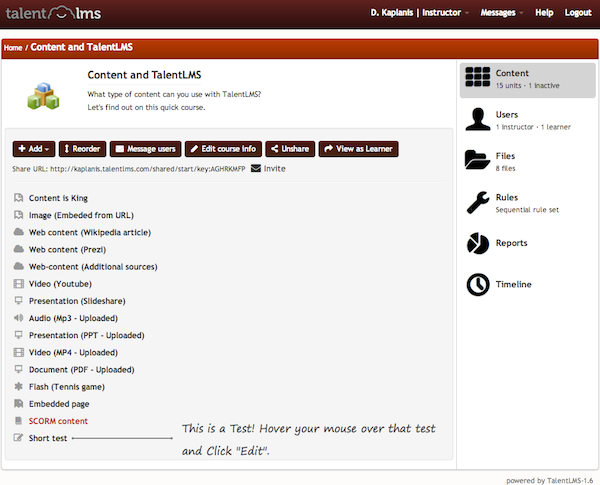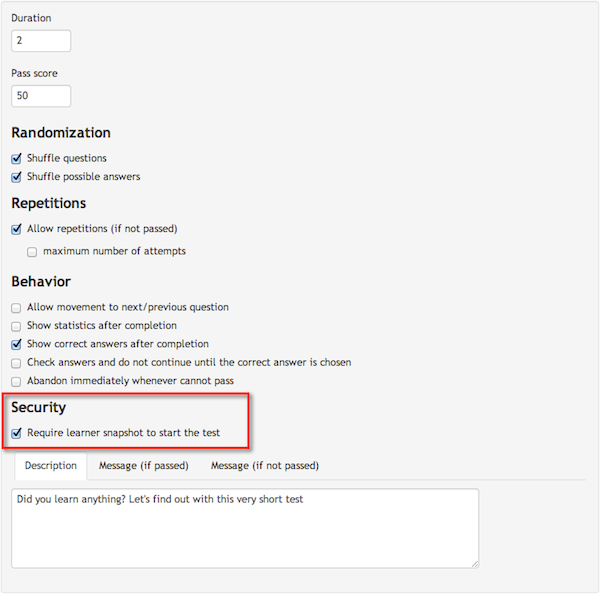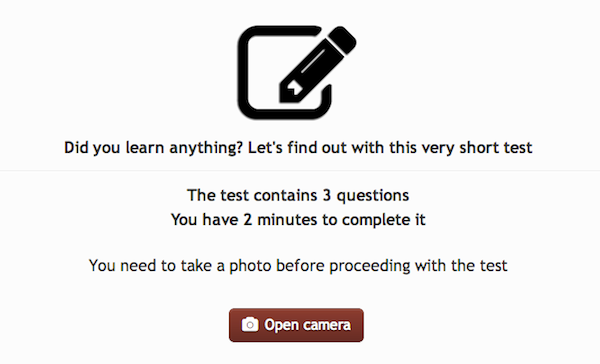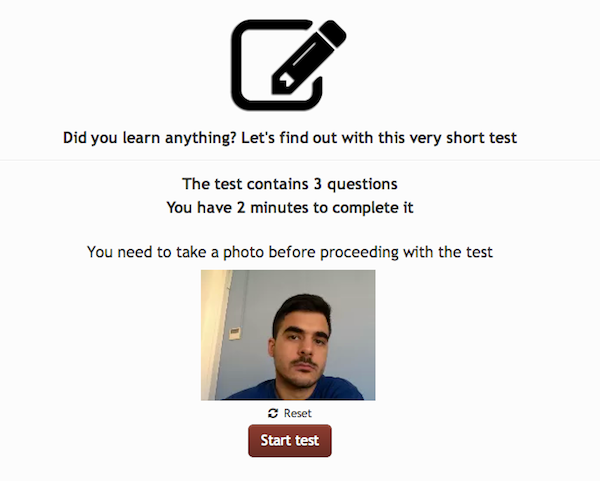An important part of how TalentLMS works is inspired by user feedback, and every version is filled with changes inspired by our users and infused with the mojo of our creative department to seamlessly integrate simple ideas in a way that will make them functional, and above all non-intrusive to the user; in other words, we don’t want our platform to have any features that will burden the user even to the slightest when it comes to the setup of your eLearning portal.
Why implement security features then?
Firstly, because people asked for it, but was that request even remotely justified for us to implement? Yes.
Our commitment to enable education is not merely location-based. We strive to deliver the platform for education to be shared, but our commitment is both to the learner and the instructor.
One of the most controversial issues in the field of education, is cheating.
Understanding why we do certain things, and why we would even bother taking steps toward curbing cheating is what we’ll touch upon first.
Why is cheating wrong?
On many levels, cheating is harmful both in respect to feedback and learning in itself. Feedback is an important aspect of why people have a preference on one professor over another. Apart from the way someone teaches, another attribute which is highly valued is how well a professor can correct and properly explain the curriculum in a way that works for each, or most students. If the professor doesn’t receive feedback, he/she can’t modify the curriculum in a way that will improve specific segments of the course, or the course as a whole.
Point #1: If you cheat, we will be lead to believe you understood everything.
Cheating, though, is harmful to the learning process as a whole; take as an example, taking a test with a book on your lap, or in our case, taking a test with the material available on another page; or think of having someone else do your online test for you. You know it’s wrong, we know it’s wrong, but is it just wrong? Essentially, the point of taking tests is evaluating the learner, and in turn, the professor. If you were good enough, the material probably worked for you and no major changes are needed in the curriculum. If you didn’t perform as you had hoped, we now have a reason to review three things:
1) Your performance: we provide an open line of communication between learner and instructor; if you have any issues with the material, you can discuss that at anytime via private message.
2) The instructor’s way of teaching: Instructors are not all-mighty beings; Improvements – even customisations can always be made to better engage specific types of students.
3) The curriculum as a whole: Would different kinds of material facilitate better learning? TalentLMS provides the Instructor with the ability to use anything from videos, to slideshows and pictures; receiving honest feedback about your performance will allow him/her to make alterations that will better suit you or others in the future.
Point #2: If you cheat, we can’t make improvements to better suit your style; learning is effectively hindered.
For us, it’s a matter of setting the standard, not just for the proper facilitation of the educational process, but for online transactions in general. Enabling you to have control over how the process is carried out is of utmost importance to us.
On the practical side of things, let’s talk about how it actually works:
As an instructor, this should be the typical screen of a course with a plethora of content

Choose which test you would like to enable this feature on. We haven’t made this a universal feature because:
1) It’s up to the professor to decide which tests they want to monitor (Depending on the level of importance etc.)
2) We don’t want to make it an all or nothing feature, that is likely to end up becoming an annoyance.
After you click on “Edit“, you should get this screen:

Click on “Test Options” to proceed to the next screen:

Make sure to click on  once you are done!
once you are done!
Now that your settings are in place, and the “Short Test” has its security feature enabled, it’s time to see it in action, from the Learner’s perspective this time.
As you can see, the following test “Welcome Screen” goes hand-in-hand with the settings we’ve selected on the above picture.
Our description is in place, our three questions are ready to be shuffled through, and we have a two-minute timer about to start ticking away.
Instead of the usual “Start Test” button, we now see an “Open Camera” button.

As mentioned in our article about the most recent changes, this feature currently only works with Chrome and Firefox.
Once you click it, you will be prompted to “Accept” the use of your computer’s Camera by the browser. (Message usually appears on the top of your browser, under the Address Bar)
![]()
Note: You might not get that message if you have changed your settings to either automatically allow or deny such requests.
Next, once you have allowed the camera to be used, you should see something like this:

By this I don’t mean you will be seeing my face – which would be an unfortunate occurrence we would like you to immediately report!
Once you have taken a picture of yourself, you have the option to re-take the picture (if you are not satisfied) by clicking “Reset“. By clicking on “Start Test” you agree to having the picture sent to your Instructor with the test once completed.
Have you had a chance to try this? Do you think this will improve the experience of Learners and Instructors, and effectively prevent cheating in eLearning environments?
We continuously strive to bring quality features for our valued users. If you have any feedback you feel would benefit you and the community, please feel free to speak your mind in our support and suggestion portal.

